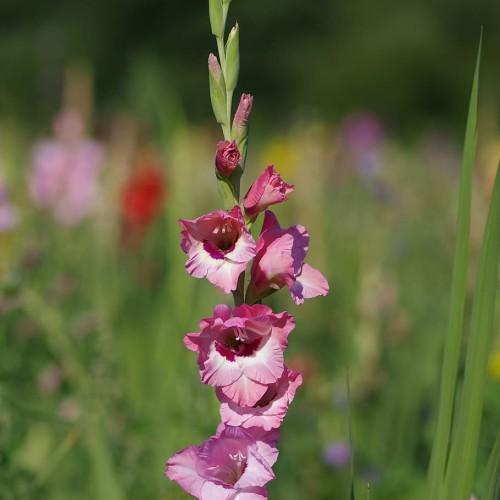
gladiolus
Gladiolus (group)
Cycle:
Perennial
Watering:
Average
Hardiness Zone:
7 - 10
Flowers:
Flowers
Sun:
Full sun
Leaf:
Yes
Growth Rate:
High
Maintenance:
Moderate
Drought Tolerant:
Yes
Salt Tolerant:
Yes
Care Level:
High
watering
The Gladiolus (group) is a species of plant that prefers a consistent watering schedule, preferably with moist soil. Water the plant deeply once a week, saturating the soil, and allow it to slightly dry out in between waterings. During hot and dry weather, the plant may need to be watered twice a week. During cooler and wetter weather, however, the plant may only require 1 weekly watering. Make sure to avoid overwatering and soil that is constantly wet as this can lead to root rot and foliage diseases. As a general rule, inspect the soil around the Gladiolus to make sure it is not overly dry before watering.
sunlight
Gladiolus (group) plants need a lot of sunlight to survive and thrive. For optimal growth, gladiolus plants should receive at least 6 to 8 hours of full sun each day. Ideally, gladioli should get direct sunlight for at least half of the day, but if conditions do not permit that, they can do well with dappled shade throughout the day. Though gladioli do not like excessive heat, they will tolerate some summer heat if they are given adequate sun exposure and good air circulation.
pruning
Gladiolus (Gladiolus (group)) should be pruned as soon as its flowering season is over. Pruning should be done by cutting back or deadheading the flowering shoots to the nearest basal foliage. This helps the plant to focus its energy on developing a healthy root system and foliage growth. Pruning should be done in late summer or early autumn when the foliage has turned yellow and begins to die down. At this time, the leaves and excess foliage should be removed completely from the base of the plant. If this is not done, the foliage can begin to take energy away from the plant and stunt its growth. Depending on the size and growth of the plant, pruning can be done up to twice a season.
